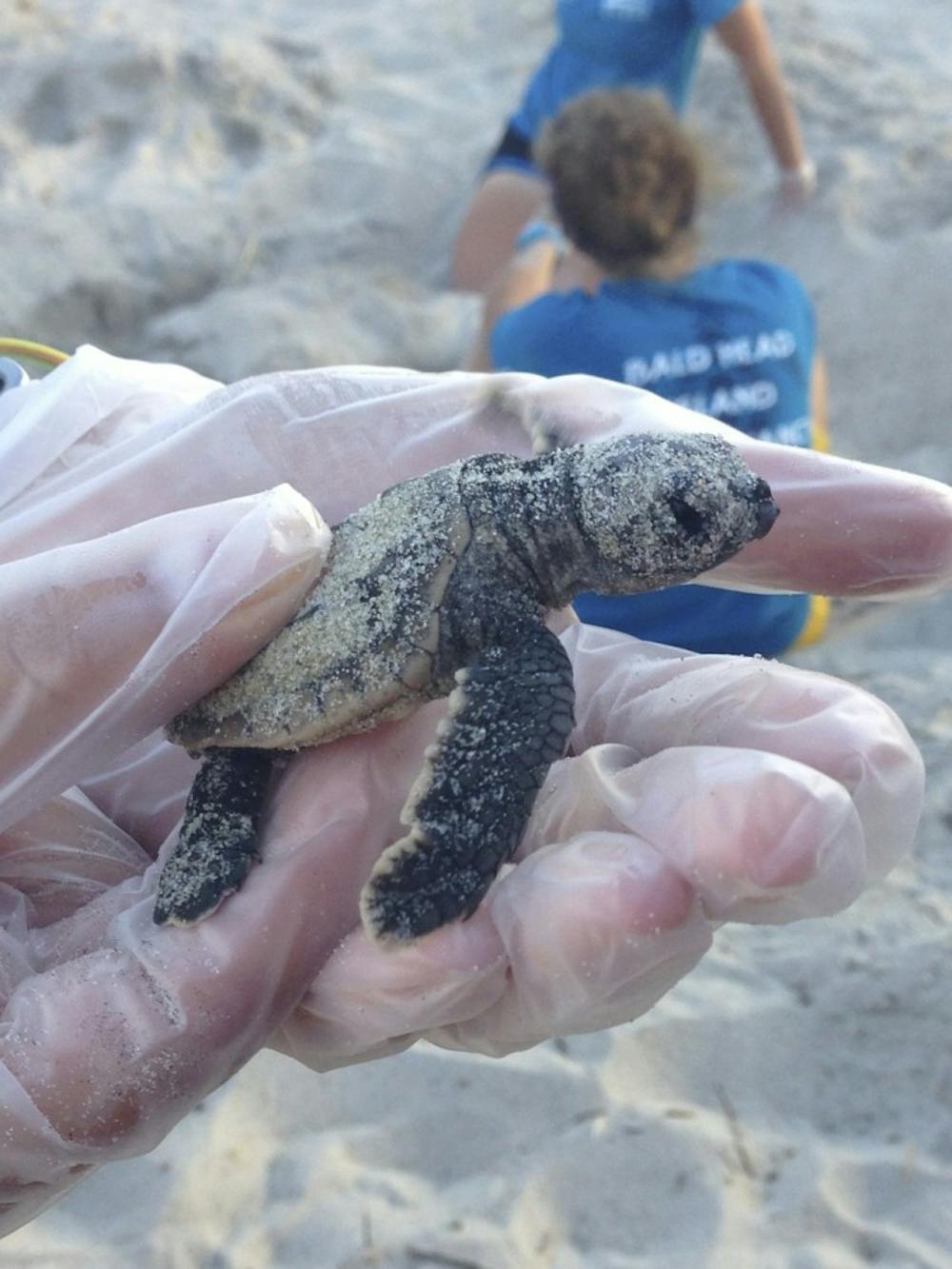BALD HEAD ISLAND - It was hot, humid and sunny and I was sweaty, sandy and, somehow, still trudging the 3.1 miles through sand and heat during the Turtle Trot at the Bald Head Island Conservancy. The $45 fee seemed steep for a 5k, but it benefitted sea turtles, and who could argue with that.
The Bald Head Island Conservancy, a nonprofit organization, has worked for 31 years to educate North Carolina residents and beach goers about Sea Turtles.
The Sea Turtle Protection Program aims to reverse the declining nesting populations of the Loggerhead Sea Turtles on the island. These sea turtles are a threatened species, because of hunting for their meat and eggs as well as attacks on their nests.
Funding for the organization comes from hands on support from the community.
In the 14 summers I’ve spent at Bald Head Island I have attended its camp to learn about coastal ecosystems, fueling my interest in nature. Additionally, they set up a July Fourth picnic, donation opportunities, races and educational events that support sea turtle research.
During the summer, employees and interns roam the beaches from 11p.m. to 6 a.m. in all-terrain vehicles (paid with turtle trot funding) to search for nesting turtles. If found, the female sea turtle are tagged, creating a census for the turtle population. The conservancy is the only NGO in North Carolina permitted to do this.
Once the turtle return to the sea, the conservancy then places a wire cage around the nest, protecting it from foxes and raccoons that disturb the nests while still allowing the hatchlings to escape and begin their journey to the ocean.
I had the opportunity to attend a turtle walk when I was 8 years old, which was more of an excuse to have a later bedtime than to see an actual turtle. But I had heard stories of this magical experience. It was something everyone had to do.
At 10 p.m. we headed out to the beach guided by interns with red-lighted flashlights in hand and waited. We walked, hoping for a walkie-talkie to alert us of a turtle spotting. A hour passed by, but nothing happened.
By midnight, I was exhausted, cranky and disappointed as we started to turn back. There were no turtles, no egg-laying and no miracle to brag about. We decided not to do it again.
This year, however, I got the other end of the spectrum. After a nest is hatched the interns will go back and evaluate the site to determine how successful the bale was. Frequently, not all the hatchlings will make it to the ocean on their own and are released into the water by the interns.
A crowd on the beach at 6 p.m. revealed two boxes of 12 hatchlings freshly dug from the nest. The miracle of life was finally right in front of me.
I watched as they made their way down to the water, fighting the small waves. They fought on, pursuing the journey of life. Maybe only one of those turtles would make it to adulthood, but watching their natural instinct guide them through the unknown was truly breathtaking.
Currently, there are 22 nests on Bald Head Island and the conservancy continues to make a difference in the outcome of sea turtles for the generations to come.


